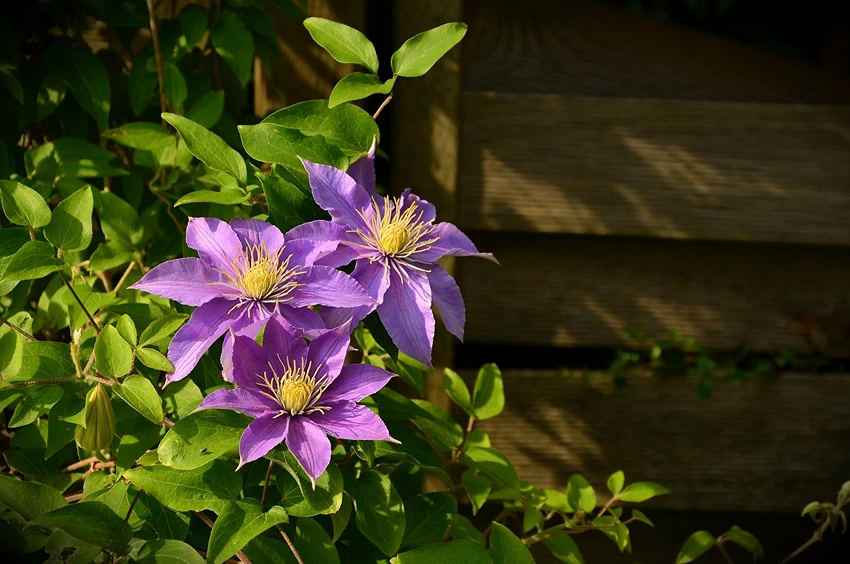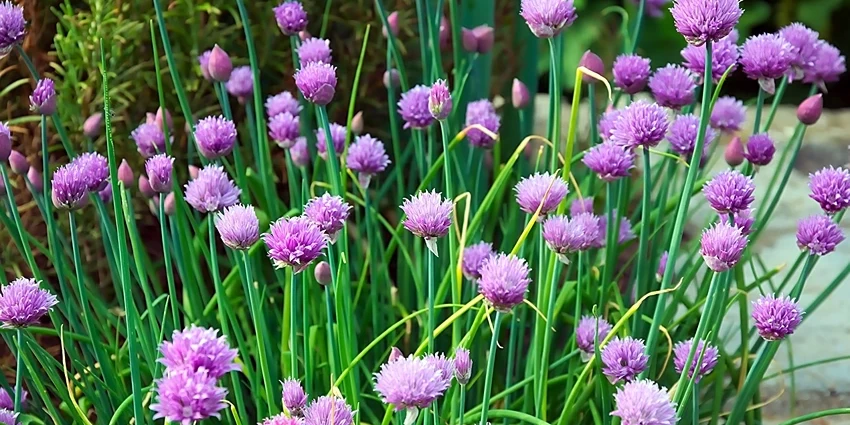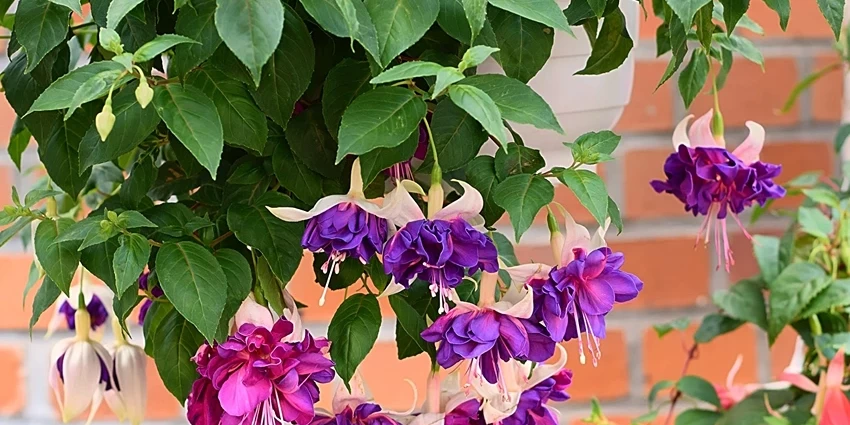All products were chosen independently by our editorial team. This review contains affiliate links and we may receive a commission for purchases made. Please read our affiliates FAQ page to find out more.
Home » How to » Grow Plants » How to grow Clematis
Clematis, with its showy flowers and climbing grace, is a true gem in any garden. It’s not just a plant; it’s a statement of beauty and resilience. But let’s be honest, growing clematis can sometimes feel like a bit of a mystery. Fear not! We’re here to unravel the secrets and guide you through the journey of growing these magnificent plants.
How to grow Clematis
To grow Clematis, plant in well-drained soil with partial sunlight. Water consistently, keeping the soil evenly moist. Provide support for climbing varieties. In the UK climate, Clematis thrives with regular care, offering a profusion of colourful blooms and enhancing the beauty of your garden.
Register for our latest in-depth reviews and product round-ups from the experts.
Enter your email address below to receive our monthly review emails.
By entering your details, you are agreeing to our terms and conditions and privacy policy. You can unsubscribe at any time.
Clematis: The Queen of Climbing Plants
Clematis, often hailed as the queen of climbing plants, is a sight to behold when in full bloom. Its variety of colors and forms can transform any garden into a vibrant tapestry.

Understanding Clematis Varieties and Their Unique Characteristics
Clematis comes in a dazzling array of types, each with its own charm. From the large, dramatic flowers of the Jackmanii to the delicate, nodding bells of the Alpina, there’s a clematis for every garden style.
The Ideal Growing Zones for Clematis
Clematis thrives in temperate climates. Most varieties do well in USDA zones 4 through 9, enjoying the balance of cool winters and warm summers.
Choosing the Perfect Site for Your Clematis
Location, location, location! Clematis loves a spot with its head in the sun and feet in the shade. This means plenty of sunlight for the vines and flowers, but cool, shaded roots.
Preparing the Soil for Clematis: pH and Nutrient Requirements
The foundation of any great garden is the soil. Clematis prefers a neutral to slightly alkaline soil pH, around 7.0. A well-drained, fertile soil rich in organic matter sets the stage for success.
Planting Clematis: Step-by-Step Guide
- Choose the Right Spot: Remember, sunny for the top, shady for the roots.
- Soil Preparation: Amend your soil with compost to improve fertility and drainage.
- Planting Depth: Plant your clematis deeper than it was in the pot to encourage strong new growth.
- Watering: After planting, give your clematis a good drink to settle the soil.
Watering and Feeding Your Clematis: Best Practices
Clematis loves consistent moisture. Water regularly, especially during dry spells. A balanced fertilizer in spring gives your plant the nutrients it needs to flourish.
Pruning Clematis for Optimal Growth and Bloom
Pruning can seem daunting, but it’s crucial for clematis. There are three main pruning groups:
- Group 1: Early-flowering varieties that need light pruning after blooming.
- Group 2: Large-flowered hybrids requiring moderate pruning.
- Group 3: Late-flowering types that benefit from hard pruning in early spring.
Pest and Disease Management in Clematis
Keep an eye out for common issues like clematis wilt, aphids, and powdery mildew. Regular inspections and prompt action can keep these problems at bay.
Winter Care for Clematis Plants
In colder zones, a layer of mulch helps protect the roots. Prune as needed based on your clematis’ pruning group.
Propagating Clematis: Techniques and Tips
Propagation is a great way to expand your clematis collection. Layering and cuttings are effective methods for many varieties.
Common Challenges and Solutions in Growing Clematis
From wilting shoots to pest infestations, clematis can face several challenges. Understanding these issues and their solutions is key to a thriving plant.
Creative Ways to Incorporate Clematis in Garden Design
Clematis can climb trellises, fences, and even other plants. Use its vertical growth to add depth and interest to your garden.

Clematis Companion Plants: Enhancing Your Garden Aesthetics
Pairing clematis with other plants not only looks stunning but can also provide the shade its roots crave. Consider hostas or ferns for a beautiful combination.
FAQs
- Best Time to Plant: Early spring or fall is ideal for planting clematis.
- Choosing the Right Variety: Consider your climate, the planting site, and the desired bloom time.
- Growing in Pots: Yes, clematis can grow in pots, provided they have enough space and proper care.
- Reviving a Struggling Plant: Check for pests, diseases, and ensure proper watering and feeding.
- Deer-Resistant Varieties: Some clematis are less appealing to deer, but no plant is completely deer-proof.
- Time to Bloom: Depending on the variety, clematis can take one to three years to bloom after planting.
Advanced Clematis Care Techniques
Clematis, with its diverse varieties and vibrant blooms, requires a bit more than just basic care to truly flourish. Here’s how you can elevate your clematis care routine:
Supporting and Training Clematis
Clematis vines need sturdy support to climb and showcase their beauty. Whether it’s a trellis, arbor, or fence, providing the right structure is key.
- Support Structure: Choose a support that allows the vine to climb easily. Clematis clings to supports with its leaf stems, so ensure the structure has elements thin enough for the vine to grasp.
- Training the Vine: Gently guide the growing tips of your clematis to the support. Regularly check and adjust to encourage upward growth.
Advanced Pruning Techniques
Understanding the specific pruning needs of your clematis variety is crucial for promoting vigorous growth and abundant flowering.
- Group 1 Clematis: These bloom on old wood and require minimal pruning. Just a light trim to shape the plant and remove dead wood.
- Group 2 and 3 Clematis: These varieties bloom on new wood and benefit from more extensive pruning. Prune in late winter or early spring to stimulate growth.
Companion Planting for Clematis
Companion planting can enhance the growth and beauty of your clematis. Choose plants that provide shade for the roots while allowing the vine to bask in the sun.
- Ideal Companions: Plants like hostas or ferns are perfect for keeping the clematis roots cool and shaded.
Creative Garden Design with Clematis
Clematis can transform your garden into a vertical wonderland. Here are some creative ways to incorporate these climbers:
- Pergolas and Arbors: Train clematis to climb over pergolas and arbors for a stunning floral canopy.
- Garden Walls and Fences: Use clematis to add color and life to otherwise plain walls and fences.
- Mixed with Other Climbers: Pair clematis with other climbers like roses for a multi-textured, colorful display.

Troubleshooting Common Clematis Problems
Even with the best care, clematis can encounter issues. Here’s how to tackle common problems:
- Wilting: Often caused by clematis wilt, a fungal disease. Remove affected parts and improve air circulation.
- Pests: Aphids and vine weevils can be problematic. Regular inspections and natural pest control methods can help.
- Poor Flowering: This can be due to improper pruning or insufficient sunlight. Ensure your clematis is getting enough light and prune correctly.
FAQs
Regular watering is essential, especially during dry spells. Keep the soil consistently moist.
Yes, clematis can thrive in pots if they have enough space and proper care.
Check for proper pruning, adequate sunlight, and consider a fertilizer boost.
Eleanor is the quintessential spirit of the British gardener — passionate, dedicated, and endlessly curious about the natural world. Born and raised amidst the verdant landscapes of the Cotswolds, she developed an early love for the outdoors, often spending hours in the family garden with her hands buried in the soil, nurturing every type of plant she could find.








